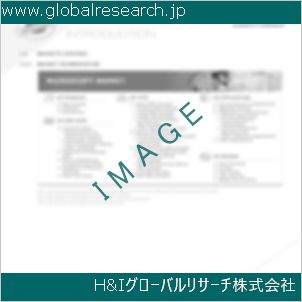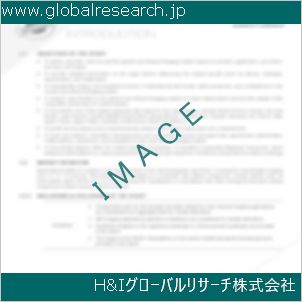Table of Contents
1 Industry Overview of Diisobutylcarbinol
1.1 Definition and Specifications of Diisobutylcarbinol
1.1.1 Definition of Diisobutylcarbinol
1.1.2 Specifications of Diisobutylcarbinol
1.2 Classification of Diisobutylcarbinol
1.3 Applications of Diisobutylcarbinol
1.3.1 Nuclear Application
1.3.2 Non-Nuclear Application
1.4 Industry Chain Structure of Diisobutylcarbinol
1.5 Industry Overview and Major Regions Status of Diisobutylcarbinol
1.5.1 Industry Overview of Diisobutylcarbinol
1.5.2 Global Major Regions Status of Diisobutylcarbinol
1.6 Industry Policy Analysis of Diisobutylcarbinol
1.7 Industry News Analysis of Diisobutylcarbinol
2 Manufacturing Cost Structure Analysis of Diisobutylcarbinol
2.1 Raw Material Suppliers and Price Analysis of Diisobutylcarbinol
2.2 Equipment Suppliers and Price Analysis of Diisobutylcarbinol
2.3 Labor Cost Analysis of Diisobutylcarbinol
2.4 Other Costs Analysis of Diisobutylcarbinol
2.5 Manufacturing Cost Structure Analysis of Diisobutylcarbinol
2.6 Manufacturing Process Analysis of Diisobutylcarbinol
3 Technical Data and Manufacturing Plants Analysis of Diisobutylcarbinol
3.1 Capacity and Commercial Production Date of Global Diisobutylcarbinol Major Manufacturers in 2023
3.2 Manufacturing Plants Distribution of Global Diisobutylcarbinol Major Manufacturers in 2023
3.3 R&D Status and Technology Source of Global Diisobutylcarbinol Major Manufacturers in 2023
3.4 Raw Materials Sources Analysis of Global Diisobutylcarbinol Major Manufacturers in 2023
4 Capacity, Production and Revenue Analysis of Diisobutylcarbinol by Regions, Types and Manufacturers
4.1 Global Capacity, Production and Revenue of Diisobutylcarbinol by Regions 2019-2024
4.2 Global and Major Regions Capacity, Production, Revenue and Growth Rate of Diisobutylcarbinol 2019-2024
4.3 Global Capacity, Production and Revenue of Diisobutylcarbinol by Types 2019-2024
4.4 Global Capacity, Production and Revenue of Diisobutylcarbinol by Manufacturers 2019-2024
5 Price, Cost, Gross and Gross Margin Analysis of Diisobutylcarbinol by Regions, Types and Manufacturers
5.1 Price, Cost, Gross and Gross Margin Analysis of Diisobutylcarbinol by Regions 2019-2024
5.2 Price, Cost, Gross and Gross Margin Analysis of Diisobutylcarbinol by Types 2019-2024
5.3 Price, Cost, Gross and Gross Margin Analysis of Diisobutylcarbinol by Manufacturers 2019-2024
6 Consumption Volume, Consumption Value and Sale Price Analysis of Diisobutylcarbinol by Regions, Types and Applications
6.1 Global Consumption Volume and Consumption Value of Diisobutylcarbinol by Regions 2019-2024
6.2 Global and Major Regions Consumption Volume, Consumption Value and Growth Rate of Diisobutylcarbinol 2019-2024
6.3 Global Consumption Volume and Consumption Value of Diisobutylcarbinol by Types 2019-2024
6.4 Global Consumption Volume and Consumption Value of Diisobutylcarbinol by Applications 2019-2024
6.5 Sale Price of Diisobutylcarbinol by Regions 2019-2024
6.6 Sale Price of Diisobutylcarbinol by Types 2019-2024
6.7 Sale Price of Diisobutylcarbinol by Applications 2019-2024
6.8 Market Share Analysis of Diisobutylcarbinol by Different Sale Price Levels
7 Supply, Import, Export and Consumption Analysis of Diisobutylcarbinol
7.1 Supply, Consumption and Gap of Diisobutylcarbinol 2019-2024
7.2 Global Capacity, Production, Price, Cost, Revenue, Supply, Import, Export and Consumption of Diisobutylcarbinol 2019-2024
7.3 USA Capacity, Production, Price, Cost, Revenue, Supply, Import, Export and Consumption of Diisobutylcarbinol 2019-2024
7.4 EU Capacity, Production, Price, Cost, Revenue, Supply, Import, Export and Consumption of Diisobutylcarbinol 2019-2024
7.5 China Capacity, Production, Price, Cost, Revenue, Supply, Import, Export and Consumption of Diisobutylcarbinol 2019-2024
7.6 Japan Capacity, Production, Price, Cost, Revenue, Supply, Import, Export and Consumption of Diisobutylcarbinol 2019-2024
8 Major Manufacturers Analysis of Diisobutylcarbinol
8.1 Manufacturer One
8.1.1 Company Profile
8.1.2 Product Picture and Specifications
8.1.2.1 Type I
8.1.2.2 Type II
8.1.2.3 Type III
8.1.3 Capacity, Production, Price, Cost, Gross and Revenue
8.1.4 Contact Information
8.2 Manufacturer Two
8.2.1 Company Profile
8.2.2 Product Picture and Specifications
8.2.2.1 Type I
8.2.2.2 Type II
8.2.2.3 Type III
8.2.3 Capacity, Production, Price, Cost, Gross and Revenue
8.2.4 Contact Information
8.3 Manufacturer Three
8.3.1 Company Profile
8.3.2 Product Picture and Specifications
8.3.2.1 Type I
8.3.2.2 Type II
8.3.2.3 Type III
8.3.3 Capacity, Production, Price, Cost, Gross and Revenue
8.3.4 Contact Information
8.4 Manufacturer Four
8.4.1 Company Profile
8.4.2 Product Picture and Specifications
8.4.2.1 Type I
8.4.2.2 Type II
8.4.2.3 Type III
8.4.3 Capacity, Production, Price, Cost, Gross and Revenue
8.4.4 Contact Information
8.5 Manufacturer Five
8.5.1 Company Profile
8.5.2 Product Picture and Specifications
8.5.2.1 Type I
8.5.2.2 Type II
8.5.2.3 Type III
8.5.3 Capacity, Production, Price, Cost, Gross and Revenue
8.5.4 Contact Information
…
9 Marketing Trader or Distributor Analysis of Diisobutylcarbinol
9.1 Marketing Channels Status of Diisobutylcarbinol
9.2 Traders or Distributors with Contact Information of Diisobutylcarbinol by Regions
9.3 Ex-work Price, Channel Price and End Buyer Price Analysis of Diisobutylcarbinol
9.4 Regional Import, Export and Trade Analysis of Diisobutylcarbinol
10 Industry Chain Analysis of Diisobutylcarbinol
10.1 Upstream Major Raw Materials Suppliers Analysis of Diisobutylcarbinol
10.1.1 Major Raw Materials Suppliers with Contact Information Analysis of Diisobutylcarbinol
10.1.2 Major Raw Materials Suppliers with Supply Volume Analysis of Diisobutylcarbinol by Regions
10.2 Upstream Major Equipment Suppliers Analysis of Diisobutylcarbinol
10.2.1 Major Equipment Suppliers with Contact Information Analysis of Diisobutylcarbinol
10.2.2 Major Equipment Suppliers with Product Pictures Analysis of Diisobutylcarbinol by Regions
10.3 Downstream Major Consumers Analysis of Diisobutylcarbinol
10.3.1 Major Consumers with Contact Information Analysis of Diisobutylcarbinol
10.3.2 Major Consumers with Consumption Volume Analysis of Diisobutylcarbinol by Regions
10.4 Supply Chain Relationship Analysis of Diisobutylcarbinol
11 Development Trend of Analysis of Diisobutylcarbinol
11.1 Capacity, Production and Revenue Forecast of Diisobutylcarbinol by Regions and Types
11.1.1 Global Capacity, Production and Revenue of Diisobutylcarbinol by Regions 2024-2029
11.1.2 Global and Major Regions Capacity, Production, Revenue and Growth Rate of Diisobutylcarbinol 2024-2029
11.1.3 Global Capacity, Production and Revenue of Diisobutylcarbinol by Types 2024-2029
11.2 Consumption Volume and Consumption Value Forecast of Diisobutylcarbinol by Regions, Types and Applications
11.2.1 Global Consumption Volume and Consumption Value of Diisobutylcarbinol by Regions 2024-2029
11.2.2 Global and Major Regions Consumption Volume, Consumption Value and Growth Rate of Diisobutylcarbinol 2024-2029
11.2.3 Global Consumption Volume and Consumption Value of Diisobutylcarbinol by Types 2024-2029
11.2.4 Global Consumption Volume and Consumption Value of Diisobutylcarbinol by Applications 2024-2029
11.3 Supply, Import, Export and Consumption Forecast of Diisobutylcarbinol
11.3.1 Supply, Consumption and Gap of Diisobutylcarbinol 2024-2029
11.3.2 Global Capacity, Production, Price, Cost, Revenue, Supply, Import, Export and Consumption of Diisobutylcarbinol 2024-2029
11.3.3 USA Capacity, Production, Price, Cost, Revenue, Supply, Import, Export and Consumption of Diisobutylcarbinol 2024-2029
11.3.4 EU Capacity, Production, Price, Cost, Revenue, Supply, Import, Export and Consumption of Diisobutylcarbinol 2024-2029
11.3.5 China Capacity, Production, Price, Cost, Revenue, Supply, Import, Export and Consumption of Diisobutylcarbinol 2024-2029
11.3.6 Japan Capacity, Production, Price, Cost, Revenue, Supply, Import, Export and Consumption of Diisobutylcarbinol 2024-2029
12 New Project Investment Feasibility Analysis of Diisobutylcarbinol
12.1 New Project SWOT Analysis of Diisobutylcarbinol
12.2 New Project Investment Feasibility Analysis of Diisobutylcarbinol
13 Conclusion of the Global Diisobutylcarbinol (CAS 108-82-7) Industry 2024 Market Research Report
| ※参考情報 ジイソブチルカルビノール(Diisobutylcarbinol、CAS番号108-82-7)は、化学的にはアルコール類に分類される化合物であり、その構造は特異な特徴を持っています。この化合物は、主に有機合成や工業用化学品の中間体として利用されており、さまざまな分野で重要な役割を果たしています。 ジイソブチルカルビノールの化学構造は、4つの炭素原子と1つの水酸基を含んでおり、そのため飽和アルコールに分類されます。この化合物は、二重結合や複雑な環構造を持たず、比較的単純な線状または分岐構造を持つことから、化学的な反応性が高いという特性を示します。そのため、反応性もあり、他の化合物と結合しやすい特徴があります。 ジイソブチルカルビノールにはいくつかの同族体が存在するため、一部の化学者にとっては興味深い研究対象となっています。これには、異性体や立体異性体が含まれますが、ジイソブチルカルビノール自体は主に一つの形態で利用されます。 この化合物の用途は広く、特に工業においては、溶媒や中間体としての利用が顕著です。ジイソブチルカルビノールは、その優れた溶解性によって、有機合成においては試薬や反応媒介としての役割を担っています。また、塗料や接着剤などの製造においても、その特性を生かして利用されています。特に、非極性および極性の溶剤としての特性から、さまざまな化学物質との混合が容易であるため、多くの工業的プロセスで重宝されています。 さらに、ジイソブチルカルビノールは、他の化合物との反応に利用されることがあります。例えば、エステル化反応やアルキル化反応において、そのアルコール基が反応することによって新たな化合物の合成が行われる場合があります。このように、ジイソブチルカルビノールは、さまざまな化学的手法を通じて、新たな化学物質の合成にも寄与しています。 関連技術としては、ジイソブチルカルビノールを使用した反応のプロセス開発や、最適化技術が挙げられます。工業的なスケールでの合成プロセスにおいては、反応条件の調整や催化剤の選択が重要なポイントとなります。これにより、反応効率を高めることが可能になり、環境への負担を軽減する持続可能な合成法の開発が進められています。 ジイソブチルカルビノールは、特にその低毒性と生分解性が注目されており、環境に優しい化学品としての側面も持っています。これにより、より持続可能な工業製品の開発が進められています。特に、環境意識の高まりに伴い、ジイソブチルカルビノールを使用した製品やプロセスは、今後も注目され続けることでしょう。 また、この化合物に関連する規制や安全基準も存在しています。化学物質に対する安全性の評価や、取扱いに関するガイドラインは、関連業界で遵守されるべき重要なポイントです。これにより、労働者の安全を確保し、環境への影響を最小限に抑える取り組みがなされています。 結論として、ジイソブチルカルビノールは、その特異な化学構造と優れた物理的特性を持つことから、多岐にわたる用途が存在し、工業や有機合成の分野で重要性を増しています。今後も持続可能な化学技術の発展とともに、その利用範囲はさらに拡大していくことが期待されています。 |
❖ 免責事項 ❖
http://www.globalresearch.jp/disclaimer












